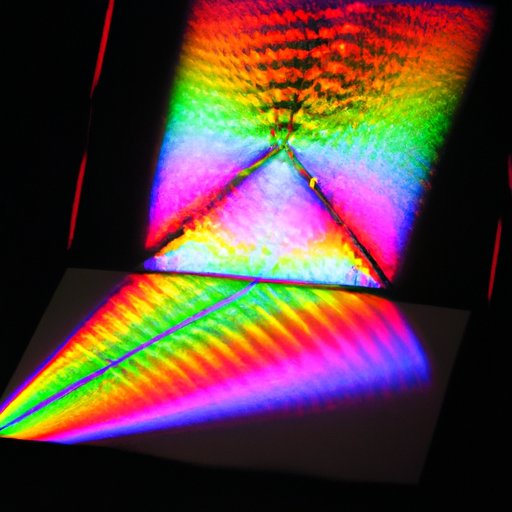Introduction: What are Holograms?
A hologram is a three-dimensional image that can be viewed without the aid of special glasses or any other device. It is created using light refraction and interference patterns, and is illuminated by a laser. Holograms have been around for decades, but they are now being used in a variety of ways, from security measures to entertainment and medical imaging. In this article, we will explore how holograms work, their history and development, and their various applications.

An Overview of How Holograms Work
Holograms rely on the principles of light refraction and interference patterns. When a beam of light passes through a transparent medium, it is refracted, or bent, due to the difference in the speed of light in air and the medium. This refraction creates an interference pattern, which is then recorded onto a photographic plate. When a laser is shone onto the plate, the interference pattern is recreated in three dimensions, creating the hologram.

Explaining the Science Behind Holograms
To understand how holograms work, it is necessary to understand the wave theory of light. According to this theory, light is composed of waves that travel in all directions. These waves interact with each other when they meet, creating interference patterns. When two coherent light sources, such as lasers, are directed onto a photographic plate, they create an interference pattern that can be recorded. This interference pattern is what creates the illusion of a three-dimensional image.
Coherence is another important element in understanding how holograms work. Coherence refers to the degree of similarity between two light sources. For example, two lasers that emit exactly the same wavelength of light are said to be coherent, whereas two lasers that emit slightly different wavelengths are said to be incoherent. The more coherent two light sources are, the more clearly defined the interference patterns will be, and thus the more detailed the hologram will be.
Finally, diffraction gratings play an important role in holography. Diffraction gratings are patterns of lines that divide a beam of light into many tiny beams that travel in different directions. When these beams strike a photographic plate, they create interference patterns that can be recorded and reconstructed as a three-dimensional image.
The History and Development of Holograms
The first experiments involving holograms were conducted in the late 1940s by Hungarian physicist Dennis Gabor. However, it wasn’t until the 1960s that the technology was developed further, and digital holography was born. Digital holography uses computer algorithms to create interference patterns that can be stored in a digital format. This has allowed for the mass production of holograms and made them accessible to a wider audience.
A Comparative Study of Different Types of Holograms
There are several different types of holograms, each with its own unique characteristics. Reflection holograms are the most common type of hologram and are created by reflecting a laser beam off of a photographic plate. Transmission holograms are created by passing a laser beam through a photographic plate. Rainbow holograms are a type of reflection hologram that produces a multicolored image. Embossed holograms are copies of original holograms that are created using a molding process.
Examining the Applications of Holograms
Holograms have many practical applications, particularly in the fields of security and medicine. Security holograms are used on documents and products to prevent counterfeiting. They are also used in banknotes, credit cards, and passports. In the medical field, holograms are used to create three-dimensional images of organs and body parts, allowing doctors to diagnose illnesses more accurately. Holograms are also used in the entertainment industry, such as in movies and video games.

Exploring the Future of Holograms
The future of holograms looks bright, as new technologies are being developed that will expand the capabilities of holograms even further. Augmented reality (AR) is one such technology, which combines real-world objects with virtual elements. This could allow for the creation of interactive holograms that respond to user input. Holographic data storage is another area of research, which would allow for the storage of large amounts of data in a three-dimensional format. Finally, quantum computing could be used to create powerful computers that use holograms as their processing units.
Conclusion
Holograms have come a long way since their invention in the 1940s, and they are now being used in a variety of ways. By understanding the principles of light refraction, interference patterns, and diffraction gratings, we can see how holograms are created and why they appear so lifelike. There are many different types of holograms, and they have a wide range of applications, from security to medicine and entertainment. As new technologies are developed, the potential of holograms continues to grow, and we can only imagine what the future holds for this exciting technology.
(Note: Is this article not meeting your expectations? Do you have knowledge or insights to share? Unlock new opportunities and expand your reach by joining our authors team. Click Registration to join us and share your expertise with our readers.)
